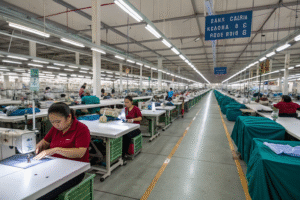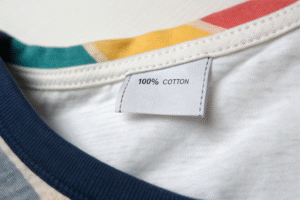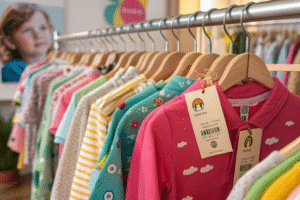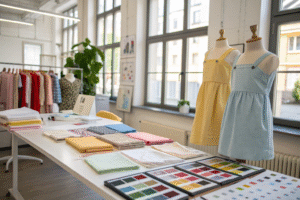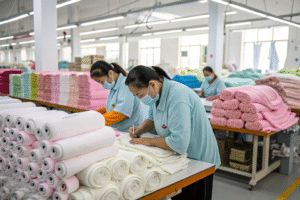Profit margins are one of the most important metrics for any children’s clothing business. Whether you’re a wholesaler, brand owner, or retailer, knowing exactly how much you make per sale helps you make smarter pricing and purchasing decisions.
As a clothing manufacturer, I’ve worked with many brand owners who underestimate their costs or overprice their items. Both mistakes can hurt sales and long-term growth. This guide breaks down the steps to accurately calculate your children’s clothing profit margins and ensure your business remains competitive.
In short:
Profit margin = (Selling Price – Total Costs) ÷ Selling Price × 100%.
But in practice, you must include all hidden expenses, not just production costs.
Understanding Your Costs
You can’t calculate profit margins accurately without knowing your true total costs. For children’s clothing, expenses come from multiple areas, not just the cost of making the garment.

What are the main cost components?
Key cost areas include:
- Cost of Goods Sold (COGS): Fabric, trims, sewing labor, packaging.
- Overheads: Rent, utilities, salaries of non-production staff.
- Marketing & Sales: Website, ads, trade shows, samples.
- Logistics: Shipping, customs duties, warehousing.
For example, if your romper costs $6 to make but shipping and customs add $1, and marketing costs $0.50 per unit, your real cost per unit is $7.50. You can check Shopify’s COGS guide for a more detailed breakdown.
Why is accurate cost tracking essential?
Without proper tracking, you risk setting prices that leave little to no profit. Using accounting tools like QuickBooks or spreadsheets ensures you capture every expense.
Calculating Gross Profit Margin
Gross profit margin shows how much money you keep after subtracting COGS from sales revenue.

How to calculate gross profit margin?
Formula:
Gross Profit Margin = (Selling Price – COGS) ÷ Selling Price × 100%
Example:
Selling Price = $20
COGS = $8
Gross Profit = $12
Gross Profit Margin = ($12 ÷ $20) × 100% = 60%
You can also use Investopedia’s margin calculator to speed up calculations.
Why does gross margin matter?
A high gross margin gives you more room to cover marketing, salaries, and other expenses. In the children’s clothing market, wholesalers often target 40–60% margins, while retailers may aim for 60–80%.
Calculating Net Profit Margin
Net profit margin accounts for all expenses, not just COGS. This is your real profitability.

How to calculate net profit margin?
Formula:
Net Profit Margin = (Net Profit ÷ Revenue) × 100%
Example:
Revenue = $200,000/year
Total Expenses (COGS + Overheads + Marketing + Logistics) = $150,000/year
Net Profit = $50,000/year
Net Profit Margin = ($50,000 ÷ $200,000) × 100% = 25%
For more guidance, check HubSpot’s net profit margin article.
Why is net margin lower than gross margin?
Net margin includes all indirect costs. It’s the most honest measure of whether your business is truly profitable.
Pricing Strategies to Improve Margins
Your margins can improve without increasing prices drastically — if you adjust sourcing, operations, and pricing strategies.

How can you increase profit margins?
- Negotiate better fabric and production costs.
- Reduce waste in production.
- Use direct-to-consumer (DTC) channels to cut wholesale markups.
- Offer limited-edition or premium designs for higher pricing.
See Entrepreneur’s pricing strategies for additional approaches.
Should you always aim for higher prices?
Not always. The children’s clothing market is competitive. Instead, focus on value perception — better materials, sustainable production, and unique designs justify higher prices.
Conclusion
Calculating children’s clothing profit margins is straightforward in theory but requires careful cost tracking and analysis. By understanding both gross and net profit margins, you can make smarter decisions on pricing, sourcing, and marketing.
If your brand is ready to optimize margins by partnering with a reliable manufacturer, contact our Business Director Elaine at elaine@fumaoclothing.com. At Shanghai Fumao, we help brands produce premium-quality apparel at competitive prices, ensuring your margins remain healthy.


